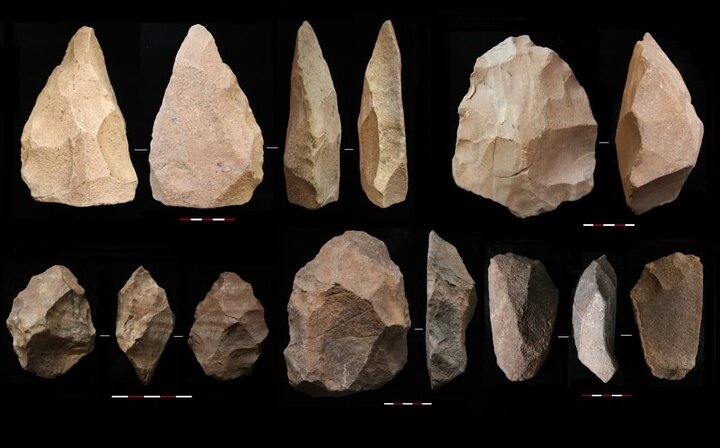Systematic archaeological survey begins at Paleolithic site in western Iran

TEHRAN – Kermanshah’s cultural heritage department has commenced a systematic archaeological survey to determine the boundaries and propose a preservation area for a vast open-air Paleolithic site that is located in the western Iranian province.
Dariush Farmani, the director of the department, on Wednesday, announced that the open-air Paleolithic site, which is an ancient stone mine, covering over 300 hectares, represents the largest area used by various hominins from the Middle to Late Pleistocene era in the Zagros Mountains, CHTN reported.
Farmani explained that the project to define the boundaries and propose the preservation area for the site began in July this year. Due to the site's significant archaeological importance and increasing damage, this initiative has been prioritized by the Cultural Heritage Department.
Archaeologist Naemat Hariri, the head of the research program, stated that the site was discovered in 2021 by the renowned Iranian archaeologist Saman Heydari-Guran, who subsequently requested a thorough examination of the area by the provincial Cultural Heritage Department and the National Archaeological Research Institute.
Following initial assessments, both institutions approved the survey. The preliminary findings indicated that the site, rich in radiolarite raw stone resources, was extensively utilized by human communities throughout different historical periods.
Hariri highlighted the presence of bifacial stone tools, scientifically known as Acheulean culture artifacts, including hand axes, cleavers, and large flakes, as clear evidence of early human occupation. Comparative dating of similar sites in the Middle East suggests these tools date 300,000 to one million years.
Furthermore, the abundance of side scrapers, stone spearheads, and core tools typical of the Middle Paleolithic period underscores the site's extensive use by human communities of that era, the report said.
Hariri expressed hope that through the boundary determination and preservation proposal project, along with detailed research using the latest scientific methods, a clearer understanding of one of Iran's oldest human settlements will emerge, helping to prevent further degradation of this invaluable site.
AM
